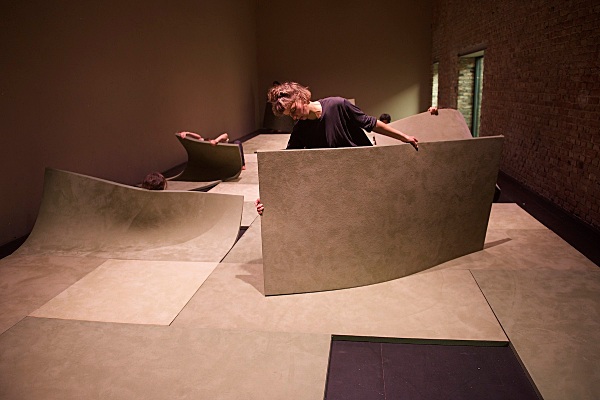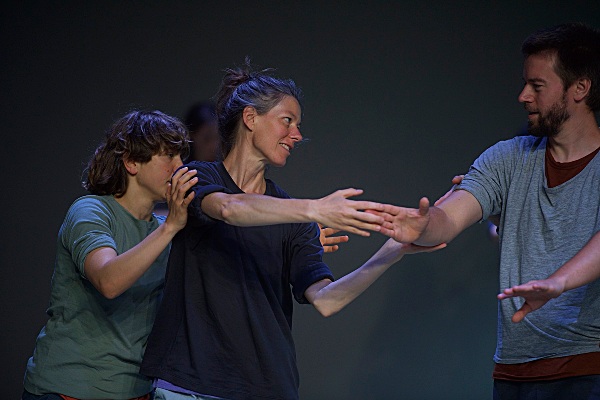Sommerfest.ival 2023

Sommerfest.ival 2023 is supported by the production location funding of the Senate Department for Culture and Social Cohesion – Department of Culture
Tanzhalle & Werkhalle Wiesenburg
Events 30th June/1st/2nd July 2023:
Friday 30th of June:
18:00 – 20:00 Isabelle Schad: Studies on Infinity #1, Durational Performance / Tanzhalle
18:00 – 22:00 FÄRGFORSKARE – Farbforscher, Opening Group Exhibition / Werkhalle
20:00 Simon Rose, Baritone Saxophone / Werkhalle
21:00 Adam Neumann Projekt / Rampe
22:00 DJ Bleck Panther & White Tiger / Werkhalle
Saturday 1st of July:
13:00 – 20:00 FÄRGFORSKARE / Werkhalle
from 15:00 Markets / Panke
16:00 – 18:00 Isabelle Schad: Studies on Infinity #1, Durational Performance / Tanzhalle
18:15 Meet me at the garden, with Isabelle Schad and Elena Basteri / Tanzhalle garden
19:00 Dan Su: “Tuō“ / Tanzhalle
20:00 Julek Kreutzer: Noise / Tanzhalle
21:00 Richard Arame Band / Rampe
22:00 Maria Patsyuk and Makossiri: TOUCHED / Tanzhalle
Sunday 2nd of July:
13:00 – 19:00 FÄRGFORSKARE / Werkhalle
13:00 – 17:00 Painting for kids / Panke
from 15:00 Markets / Panke
16:00 Gabi Dumkow, Soprano / Rampe
18:00 Dan Su: “Tuō“ / Tanzhalle
19:00 Shasta Ellenbogen, classic / Werkhalle
20:00 Julek Kreutzer: Noise / Tanzhalle
21:00 Mugglestone HIFI / Werkhalle
Ongoing: Bruno Pocheron Bulbs installation / Rampe
Studies on Infinity#1
30.06.2023 18-20h
01.07.2023 16-18h
Tanzhalle Wiesenburg, Wiesenstrasse 55, 13357 Berlin
Studies on infinity #1 deals with the working material and materialities related to Isabelle Shad’s upcoming group work The Shift Of Focus, which will premiere at HAU1 in October 2023. Removed from its theatre context, the movement material is examined for its potential of infinite repetition and variation, which develops its power in a durational installation performance. Certain sections are cut and recombined, as if zooming in or like miniatures, in such a way that each element can speak for itself in a field of tension between protagonist and chorus, landscape and inhabitants, movement and its voice, infinitely repeating like everything in our universe.
Cast & Credits
Concept & Choreography: Isabelle Schad; Co-Choreography & Performance: Aya Toraiwa, Claudia Tomasi, David Kummer, Forough Fami, Jan Lorys, Jasmin İhraç, Johanna Ackva, Maja Zimmerlin, Manuel Lindner, Veronika Heisig, Viviana Defazio, Yusuke Taninaka; Composition & Sound: Damir Simunovic; Light Design, Technik: Emma Juliard, Arnaud Lesage; Costume: Melika Akbariasl; Voice Work: Ignacio Jarquin; Outreach and Mediation: Elena Basteri; Production Managment: Heiko Schramm; Production: Isabelle Schad
Images: Dieter Hartwig, all rights reserved










Studies on Infinity #1
3 Questions to Isabelle Schad from Elena Basteri
E.B.: For three years now the Sommerfest.ival has been an occasion for you to present durational/installation performances. How do these hybrid formats between dance and visual art relate to your practice in general and to your current choreographic research?
I.S.: My desire to extract specific material and place it into another context derives from my working method as such. In the process of creating a piece, I start by working on one element of material at a time. I look at it as such, as materiality that needs to speak by itself and create its own meaning. Working on it over and over again, finding different perspectives on the same material, different aspects around the detail to get to the centre of attention. It’s almost as if I was working on a sculpture, and over time it gets richer in its depth and begins to live by itself … The meaning is then less of a narrative one. The narrative gets created by the viewer – in a very open way. It might be one that refuses linearity but anchors itself in the sensual experience of the person looking. For the durational pieces I take some of the material of a current work and place it in the context of an installation. I place it in time, make an order, like a mini score. It’s an organisation that follows my intuition and of course rhythm, which then again is similar to making a piece. But here, as the space is an open one that you can enter and exit any moment, I need less of a beginning and end, less of a dramaturgical organisation than if people were sitting in their seats in a theatre, where the codes ask for another treatment – in a way a more ‘classical’ one, like the three acts of a drama. So here the score with the chosen material lasts for a certain duration, and is then looped and played again with its new present perception, with another focus, and therefore becomes a new experience based on the previous one, just like in life, where everything is always new.
This also allows us to deepen our understanding of the material over time. Often there’s a kind of new relaxation quality that can only appear over time. Exhaustion helps in abandoning, in giving up the ‘too much’ … of willing, or wanting … to do it well or … we all know about this not so fruitful effort. Kind of too much of everything. There’s something nice about knowing that you can do it again. It helps the performer to be completely in the moment, in the perception of the self as a whole and in the whole.
E.B.: The concept of infinity mentioned in the title is a spiritual, philosophical, mathematical concept that we can imagine but which, in our finitude, we can’t experience. You apply this ungraspable concept to the realm of the body and movement. What is the vision underlying this transposition?
I.S.: Everything in our daily movement – as humans on this planet, which underlies gravity – is based on weight shift. This basic weight shift applies to all our actions and activities in life: walking, moving through space, our work from type-writing to any kind of craft … lifting a cup to drink and so on, just everything.
Movement principles researched around this one always valid principle – which is basically an infinity sign, a rotation from right to left to right in a roundish, smooth way – can be repeated infinitively. It’s THE ONE principle that leads to the 10,000. Then every repetition has its own variation. You can’t just think of repetition in a binary way, which would mean the performer/doer falling into a routine. What interests me is a way of being with the material in full presence. If you’re 100% there, without any irritation – which is probably a rare thing to achieve for the duration of a full-length performance – you’re able to integrate all these treatments of layers and details we have worked on along the way. Just like a surfer riding a wave, you modulate your material through the ‘tool’ of being fully there – or maybe it’s easier to put it the other way round: the material serves as a tool to be fully there.
Being fully there is also a notion we practice in Zen, and in aikido Zen when I go to Gerhard Walter’s dojo. We practice to forget everything, to be empty, to let go of the daily thoughts, of the running and jumping from here to there, in order to be really there where we are. With our attention on our perception of what we do, and not of what we think. I relate this process to infinity. It’s a way of believing in the forces that exist that make us move through this world, that help us to overcome dualistic concepts and to create sense through the abilities we have. It’s a way of relating differently to time … less linear …
E.B.: A new aspect in your choreographic research is the exploration of the voice in relation to movement. After your solo Personne with Voice, in Studies on Infinity#1 the voice becomes plural. The idea of the chorus comes into play, a term that brings choreography back to ancient Greece and to its own etymology. Would you like to share some thoughts on this?
I.S.: The original concepts of the function of the chorus are really fascinating. The chorus was really a tool for the writer to express himself. It often functioned as a way to comment on the plot, to give an interpretation, express an emotion or give a very personal meaning to the piece.
At the moment I’m researching around my new group work, and the idea of the chorus travels through all these meanings: not only through the breath and the voice, which is worked in relation to presence and movement, but also by means of rhythm and movement, by creating a landscape, an additional rhythm, an additional weight or simply an overall atmosphere.
Within the chorus, certain protagonistic activities appear, travel, get replaced or merge back into the plurality of the chorus. It’s important for me that the protagonists don’t stay within certain persons while others perform the chorus, but that there’s a constant interchange of who becomes a protagonist for a certain section, how this protagonist is shadowed (by someone else, which is the beginning of becoming part of the chorus again), how replacement systems install a constant interchange of protagonist and chorus between all the performers involved.
I love the idea that this model could be an ideal way of communicating with one another, of creating stories, of undoing hierarchies … allowing for one’s actions to be relevant, to appear and disappear, to support others and to let go.